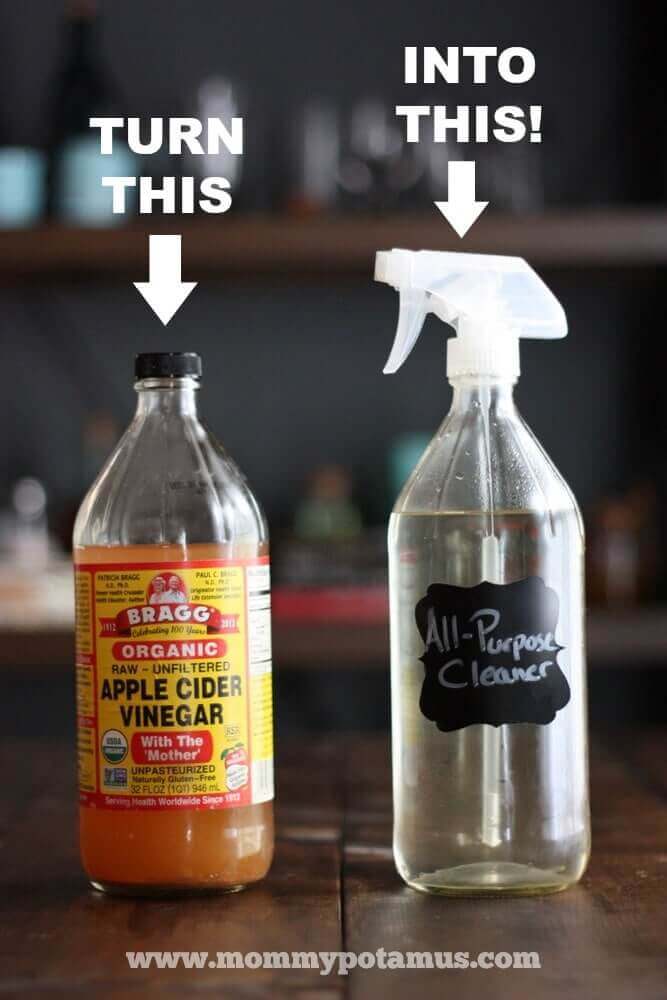
Yesterday, My Son Ate Some Laundry Detergent
Being the kind, thoughtful mother than I am, I handed him a glass of water to wash it down. That, folks, is the beauty of making your own non-toxic cleaning supplies.
The best part? They WORK. As in, move over Clorox – oregano essential oil can kill spores from anthrax, e. coli and a broad spectrum of bacteria – work. ¹ Certain essential oils have also been found to kill MRSA on contact in under two minutes, while others neutralize salmonella, e. coli and pneumonia. (source)
Yep, you can clear out 90% of your toxic cleaning supplies with some baking soda, vinegar, castile soap and a few essential oils. Dish and laundry detergent need a few extra ingredients, but that’s for another day . . .
Unfortunately, Essential Oils Tend To . . .
Increase the likelihood that plastic bottles will leach the kind of nasties you’re trying to avoid by making your own cleaners in the first place. No worries, though! It’s super easy to make your own glass spray bottle.
Simply take an old screw top bottle (I use an apple cider vinegar bottle) and fit the nozzle from your old spray bottle on top. Voila!
Need something to put inside your little container of absolute genius? Here’s a recipe to get you started!

Homemade All-Purpose Cleaner
Ingredients
- 1 cup water
- 2 teaspoons castile soap
- 20 drops essential oil (see below for options)
Instructions
- Pour ingredients into a spray bottle, preferably made of glass
- Shake well before use
- Store in a cool, dark place. (Essential oils oxidize in sunlight)
Choosing your essential oils:
In various studies, these oils have demonstrated potent antimicrobial properties. Some are more effective in killing e. coli, while others are more effective with salmonella, etc., so it’s best to use them blended together.
If there’s a particular strain you’re trying to target check out this study, but in general find that they all work well for run-of-the-mill house cooties.
Note: Though I do try to make cleaners and beauty products that are safe enough to eat, I don’t recommend ingestion of essential oils in general. Some can be used as flavorings and there are times in which I might use them internally, but it is not a practice I take lightly. Also, some oils can cause respiratory problems in susceptible children, so I’ve marked the ones that are generally considered safe for use around kiddos. All essential oil solutions should be kept out of children’s reach.
- lavender – kid friendly
- lemon – kid friendly, and especially helpful in the kitchen as a degreaser
- grapefruit– kid friendly
- pine– kid friendly
- cinnamon
- tea tree– kid friendly
- clove*
- eucalyptus
- peppermint– fine for kids over six
- rosemary
- oregano
- spruce– kid friendly
Want non-toxic cleaning recipes that WORK?
I’ve created a free ebook for you as a gift for signing up for my newsletter. 7 Non-Toxic Cleaning Recipes That Really Work covers seven recipes that you can make in just a few minutes each for squeaky clean windows, sparkling dinnerware, lemon-fresh countertops, and more. Subscribe to my newsletter below and you’ll be redirected to a download page for immediate access to this PDF ebook.
Sources:
¹ Archives Microbiology, Volume 174, October 2000; Quarterly Review Biology, Volume 73, March 1998




